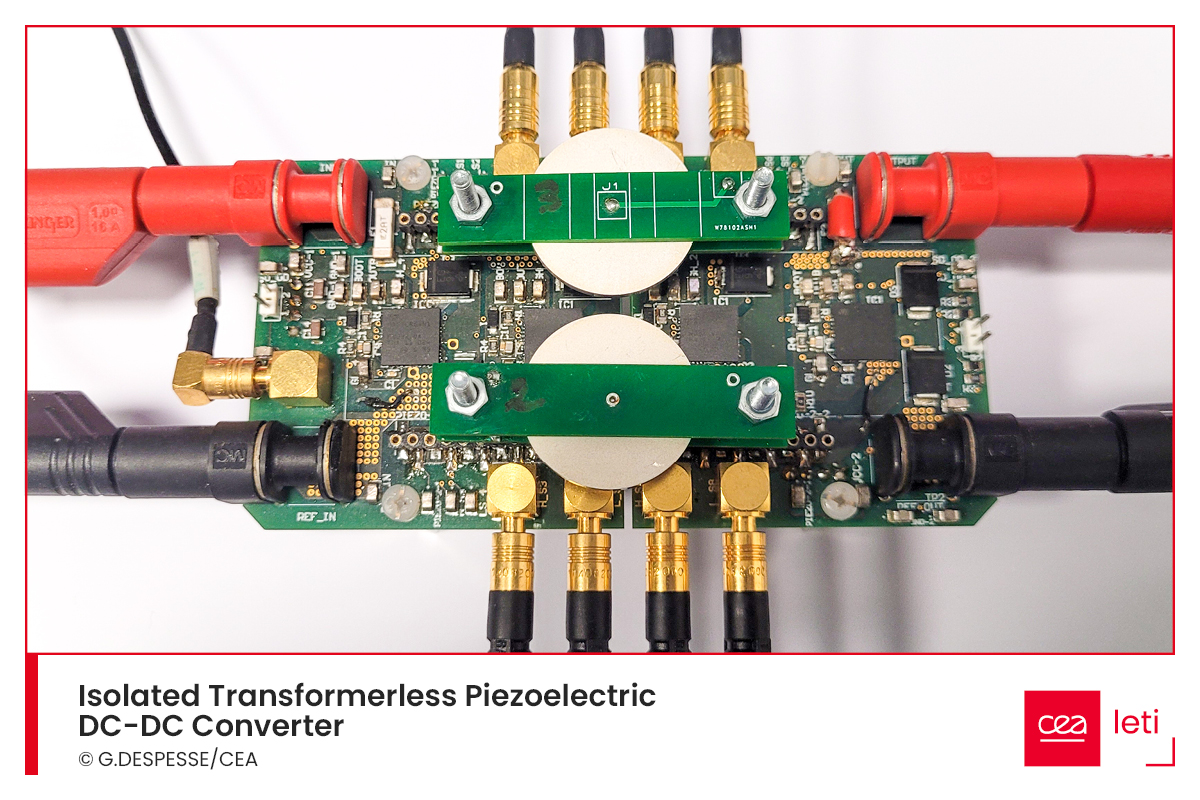Grenoble, France – Sept. 24, 2024 – Building on its earlier breakthroughs introducing a new way of converting electrical power using piezoelectric resonators and developing a dual-bridge piezoelectric resonator converter, CEA-Leti has paved the way to isolating piezoelectric converters without transformers.
The new topology of dual-bridge isolated piezoelectric resonator converter (DB-IPRC) provides isolation using two independent piezoelectric resonators. The improved version of the DC-DC converter significantly improves efficiency, while maintaining the converter isolation principle.
The results were reported in a paper, “Switching Assisting Circuit Improving the Efficiency of DC-DC Converters Based on Piezoelectric Resonators", presented in this summer at PCIM Europe 2024.
The paper notes that “for a 200 V to 120 V conversion, the converter shows an efficiency of 96.2 percent with the inductive assisting circuit, 94.3 percent with the piezoelectric one and 87.4 percent without any assisting circuit. The (piezoelectric resonator) assisting circuit offers a gain in efficiency over a smaller operating range than the inductance, but leads to a flatter converter."
Building on 2023 Breakthroughs
The work expands on previous results reported by CEA-Leti in the August 2023 issue of “IEEE Transactions on Power Electronics" in the article, “A New Isolated Topology of DC–DC Converter Based on Piezoelectric Resonators". The article says that the new topology “uses the natural isolation of piezoelectric resonators to isolate the converter's output from the input and vice-versa."
The use of piezoelectric resonators instead of inductors in power conversion “will lead to a dramatic reduction in the size of power converters," explained Ghislain Despesse, a co-author of the PCIM paper and the earlier article. “Our results make it possible to extend this type of compact conversion to isolated converters. So this type of converter is now compatible with a much wider range of applications, such as TVs, phones, tablets and electrical tools."
“For many people, piezoelectricity is associated with energy harvesting and the idea of low power," Despesse said. “But in power conversion, piezoelectrics operate at high frequencies, greater than 100kHz, with no limits in terms of input power. That makes it possible to reach power levels of several hundred watts. The range of applications is therefore very broad, with most converters having a rated power of less than 100W."

